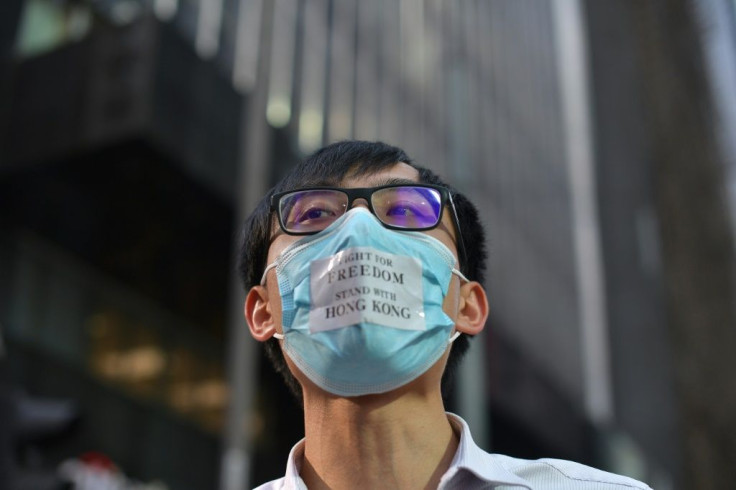The Colonial-era Law That Gives Hong Kong Leader Sweeping Powers

Hong Kong leader Carrie Lam on Friday invoked a rarely used colonial-era law to ban protesters from wearing face masks.
What does the new law say and why does it matter?
Why masks?
During the four months of huge protests, face masks have become ubiquitous as demonstrators try to avoid being identified by police. Respirators have also been used to deal with tear gas.
The new law makes it illegal to wear a mask at a sanctioned or unsanctioned rally, with up to a year in prison for transgressors.
Hong Kongers will still be allowed to wear face masks in the street -- a common practice in a city ever since a SARS outbreak killed more than 300 people in 2003.
But police are allowed to force people to take their masks off, with a maximum six months in jail for those who refuse.
Exemptions have been made for legitimate religious and medical reasons and for those who need to wear masks for their jobs -- such as journalists donning respirators during tear gas clashes.
Why is it significant?
This is a watershed moment for Hong Kong.
It is the first time in 52 years that these emergency powers have been invoked and the only time since the city was returned to China by Britain in 1997.
For the last few decades all Hong Kong's laws have passed through the city's pro-Beijing stacked parliament where they are discussed debated and scrutinised.
But the Emergency Regulations Ordinance allows chief executive Lam to bypass that legislature altogether.
Critics see this as a slippery slope and a move that undermines the city's reputation for being a commercial and legal hub built on rule of law and a trustworthy judiciary.
Where did this law come from?
It was first introduced by the British in 1922 to combat wildcat strikes by Chinese seaman who were protesting dismal wages.
Passed in a single day, it received little scrutiny and remained on the statute books.
The broad wording enables Hong Kong's leader to make "any regulations whatsoever" in the event of an emergency or imminent public danger.
The range of other powers available are extensive. It includes censorship of the media, control of ports, the appropriation of property as well as extra arrest, detention and deportation powers for the police.
The chief executive could also authorise searches without court warrants and the censorship and suppression of communications.
The last time it was used was during the 1967 riots when more than 50 people were killed over the course of a year as leftists, with the help of the People's Militia from mainland China, conducted a widespread bombing and murder campaign.
What might come next?
On Friday Lam said she would consider making new regulations under the emergency law if the violence continued to escalate.
But if that also fails to quell the unrest there are two more options.
Article 14 of the Basic Law -- Hong Kong's mini-constitution since its handover to China in 1997 -- allows the local government to request help from the People's Liberation Army garrisons in the city in the event of a public order breakdown.
The "nuclear option" remains Article 18, which allows China's National People's Congress Standing Committee to declare a state of war or a state of emergency. At that point, Beijing can make any law for Hong Kong it deems fit to deal with the crisis.
Lam could also make concessions to protesters, such as meeting their demands for an independent inquiry into the police, an amnesty for those arrested and universal suffrage.
But she and Beijing have repeatedly rejected that idea.
© Copyright AFP 2024. All rights reserved.





















